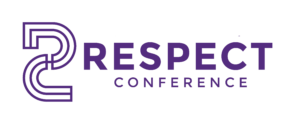Conference Presenter Policy
All submissions accepted for presentation at RESPECT (e.g., paper, panel, workshop, lightning talk, etc) require registration and conference attendance by at least one of the authors to present the work.
No Show/Substitution
If, after registering, unforeseen circumstances prevent the presenting author from attending and presenting, it is his/her responsibility to notify the conference program chairs regarding the situation as soon as possible. It would be most preferable to arrange for a substitute presenter.
Alternate Presentation Options (in order of preference)
(1) Co-author presents the paper
(2) Substitute Presenter to present the work or play your video and then manage your virtual presence during the Q&A (provide substitute presenter contact information to the program chairs)
(3) Pre-recorded video (add links to downloadable video presentation and slides to the program chairs)
Session Lengths:
Full-papers: 13 minutes + 5 Q&A
Short papers, Position, & Experience Reports: 10 minutes + 3 Q&A
Presenters will be given 3 min, 1 min, 0 min warnings from the session chairs
Presentation Guidelines:
- Use a slide ASPECT RATIO of 16:9
- Choose a high contrast color scheme that supports color blind readers,
- Use more than color coding to communicate information,
- Keep text brief,
- Keep graphics simple and verbally describe images, animations, videos,
- Speak clearly, use a microphone, face the audience, and use common, understandable terms,
- Post your slides early and provide a link them them on the slides,
- Share your contact information, and
- Download your slides, videos, and sounds locally on your computer; don’t depend on wifi for your presentation.
As speakers at RESPECT, show respect to others by:
- keeping to time limits,
- preparing presentations in advance,
- listening to questions,
- using the microphone so everyone can hear, and
- repeating questions so the audience can hear.
Speakers are role models. As such, promote connections between attendees and engage with attendees on stage and off.
